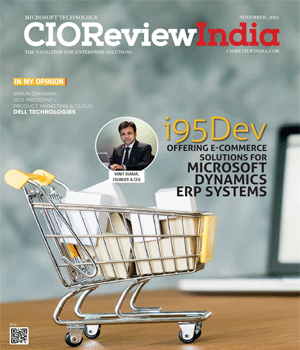
Differences between XP and Scrum
Tami Reiss, CEO, Cyrus Innovation | Wednesday, 29 June 2016, 07:10 IST
 WHAT’S RIGHT FOR YOUR TEAM?
WHAT’S RIGHT FOR YOUR TEAM?
Agile is useful if you want to develop and deliver great, working products to a client quickly and efficiently.
There are tons of Agile flavors, with more constantly under development.
Which Agile flavor is right for your project or team?
Well, Scrum is the most popular. But we at Cyrus advocate for Extreme Programming (XP). Though two are pretty similar, we think the key differences make XP shine.
"Which Agile flavor is right for your project or team?"
WHAT IS EXTREME PROGRAMMING (XP)?
Just like other Agile processes, XP improves software development through collaboration between self-organized, cross-functional teams. XP focuses on small projects, with daily standups to check that everyone’s working towards the same goals.
Within XP, there’s also:
• multiple short development cycles (“iterations”) each ending with functional products
• test-driven development (TDD), continuous integration, and continuous delivery
• paired programming (one computer shared by two develop ers)
• frequent communication between the team and the customer
• planning for, expecting, and adapting to changes
• a self-regulating team with a flat management structure
HOW ARE XP AND SCRUM SIMILAR?
We wouldn’t blame you if you couldn’t tell them apart at first.
1.Focus on quality, error-free product delivery as fast as possible.
2.Short development cycles – “Sprints” in Scrum, “Iterations” in XP.
3.Rely on regular meetings throughout cycles to track the plan.
WHAT’S THE DIFFERENCE?
It might not seem like much, but these subtle differences are really important. It impacts how your team functions and delivers.
1.Different development cycle times and results
XP’s iterations are usually 1-2 weeks ending in functional software, while Scrum sprints are closer to 2-6 and can often include “links to nowhere”.
2.Different ways of prioritizing tasks
In XP, the customer/product owner weighs opinions from development and design then decides on the development order for new features.
In Scrum, the product owner specifies feature priority, but the team still develops in the order they chose within the sprint. Additionally, only the features assigned can be worked on during a sprint; extra time is spent in “slack”.
3.Different change allowances/ accommodations
XP is flexible and accommodating to changes made during iteration, and often encourages changes if the improve the efficiency of the code or product.
Scrum teams do not allow changes during a sprint. If a big change is necessary, the current sprint will end and a new sprint will begin.
4.Different use of engineering practices
XP strongly encourages teams to use certain practices such as test-driven development, pair programming, automated testing, and continuous integration.
Scrum does not require any specific practices. Instead, teams can choose engineering methods according to project requirements.
WHY XP OVER SCRUM AND BASIC AGILE?
We think XP is a better choice for most teams, when adapted correctly.
XP helps us efficiently deliver products and features, on target and on brief.
1.Functional products at every step of the way
With continuous testing, teams constantly make sure the products are working and functional. It helps avoid errors and problems, saving time and energy in the long run.
2.Better collective ownership of code
Every team member takes responsibility for code quality, and any member can take the initiative to change code to fix bugs or improve functionality. It saves time and means individuals don’t have to wait for permission to move a project forward.
3.Clarity on customer requirements
Teams are required to communicate with and involve their customer in development. Teams are clear on what the customer wants, reducing confusion.
4.Better managed expectations across teams
The constant communication within teams and with the customer means teams understand what’s expected. Concerns are addressed immediately.
5.Incremental improvements through regular retrospectives
It allows for constant improvements and helps projects move forward rather than stopping to look back later and correct old problems. The aim is always to check as you go to make sure things are working.
WHAT’S YOUR AGILE FLAVOR?
Cyrus specializes in helping teams scale Agile practices. We don’t believe that any one practice is required to be Agile, and we help companies work out which parts of all of the flavors will work best for their team and their project.
Before advising, we think about the following:
• How important is it that you know the software is functional?
• Is your team distributed across time zones?
• Who should be involved in the retrospectives?
• Do we only need pairing on harder problems or all the time?
• When is solo or mob programming appropriate for our needs?
• Do we need to test everything, or can we be selective about what we test?
• How can the development team integrate with UAT or exploratory testing teams?
CIO Viewpoint
Put Your Customer First When Doing Your Digital...
By Thomas Saueressig, Chief Information Officer, SAP SE
Superposition Between Cloud and Quantum Computing
By Saju Sankarankutty, CTO, UST Global
Why Enterprise Content Management Systems...
By Ankush Tiwari, CTO, Mobiliya Technologies
CXO Insights
By John Quirk, Vice President of Network Operations, IAT Insurance Group & Manny Landron, Chief Information Security Officer, IAT Insurance Group
A 3-Pronged Framework To Ensure Smooth...
By Deepak Arora, VP - Technology, Publicis Sapient
The Benefits Of Cloud Email Security









